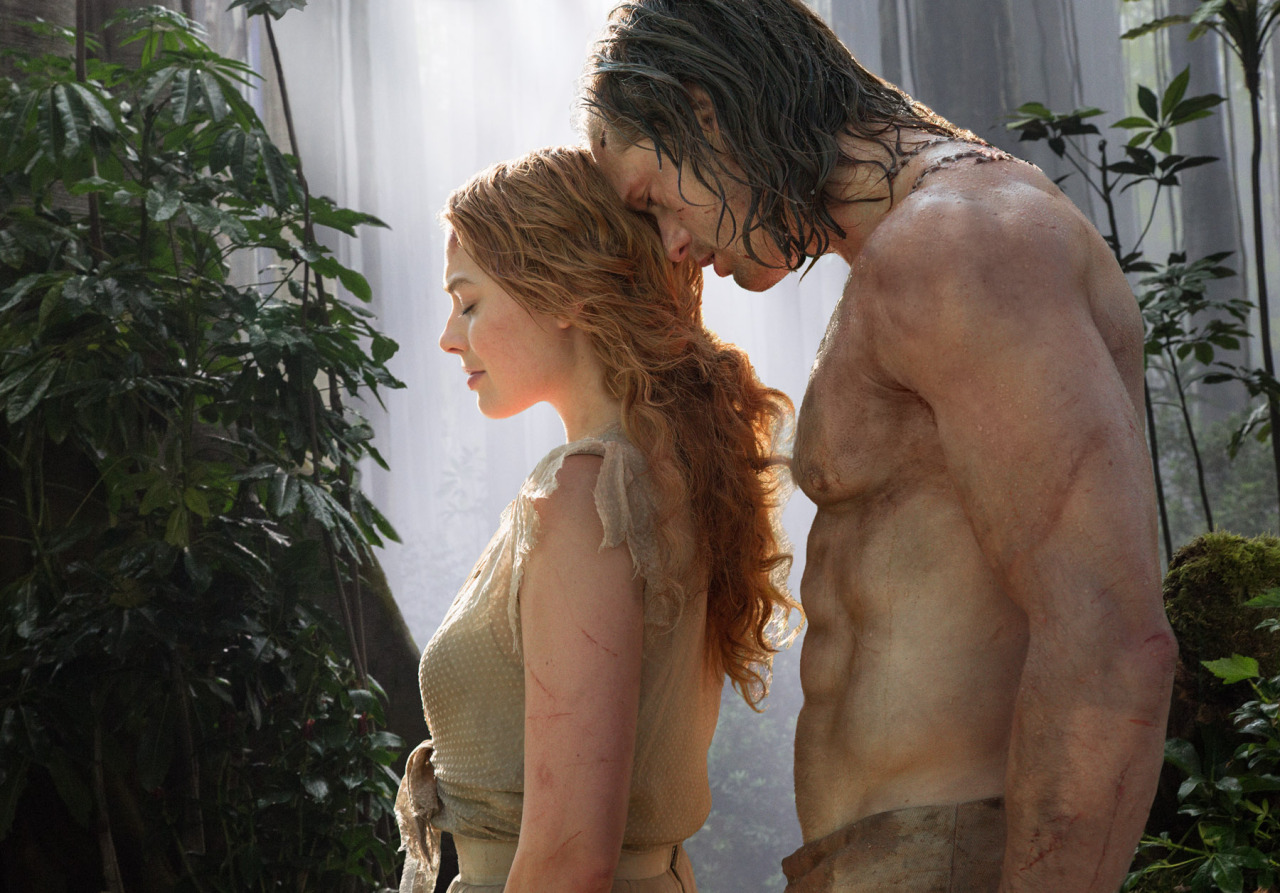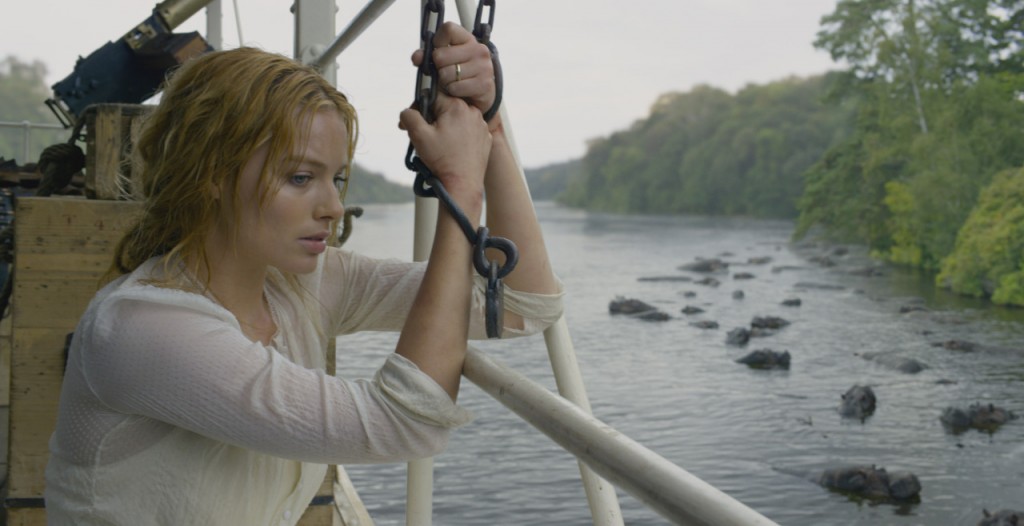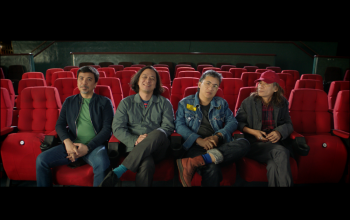When it comes to recycling yesterday’s heroes, one can wonder if there’s still a place in contemporary cinema for Edgar Rice Burroughs’ century-old, Tarzan. Arguably, the last thing viewers want to see is another exhausting reiteration of his origin story – a pratfall that David Yates (director of the last four Harry Potter films) avoids by liberating Tarzan from a brainless feral child to a socially conscious “modern” Englishman in Warner Bros.’ The Legend of Tarzan. Yet, so as to not alienate those who are either born today or lived in a jungle for years, the film wisely uses strategically-placed flashbacks to fill his backstory and at the same time jump right into this re-imagined tale. The concept is admirable, however, these vines of flashbacks alone are not sturdy enough to sustain the swing from classic to modern without dropping its true spirit of adventure in the process.
With the all being “King of the Jungle” monicker now in the past, Alexander Skarsgard plays the new and improved Tarzan or more precisely for this interpretation, John Clayton III, the fifth Earl of Greystoke. John receives and summarily declines an invitation from King Leopold of Belgium to be the emissary in an expedition to the Congo. He is, however, persuaded by an American soldier-turned-humanitarian George Washington Williams (Samuel L. Jackson) who suspects that the Belgian King is enslaving the region’s people. Unbeknownst to John, he is actually being lured under a false pretense in order for the King’s envoy, Captain Leon Rom (Christoph Waltz) to hand him to a tribal chief whose plotting revenge against Tarzan (for reasons that will be explained later in the film). All this in exchange for loads of diamonds that will be used to finance the King’s burgeoning slave trade. Reluctantly taking his wife Jane (Margot Robbie) with him, Tarzan will be forced to peel off his layers (or his shirt to be more accurate) and revert to his animalistic state to fight for the country he once grew up in, now endangered of slavery.
Yates undeniably has a firm grasp of cinematic detail as evidenced by the sublime shots of the Congo’s vast green jungles and its thin serpentine rivers. Also noteworthy is a lovely scene of Tarzan nuzzling a pair of lions during his homecoming. However, despite the cinematic storytelling and cutting-edge technology, the film still needs a slightly more aggressive and adventurous filmmaker. For brief moments, you witness what Yates aspires the film to be – Tarzan swinging from vine to vine, fighting apes, etc. but most action scenes lack the excitement that its obvious competitor, The Jungle Book, excelled in earlier this year. Perhaps this is hampered down by a melancholic and introverted version of Tarzan who sustains his serious tone all throughout the film to the point that viewers will struggle to scratch anything beyond this surface. Skarsgard certainly can’t be faulted in his characterization as he delivers the brawn and brain as the new Tarzan. One can only imagine the rigorous training he went under to achieve his physical state. Only if his actual character generates more emotional connection than his abs, the film will be better served.
Researchers are sample cialis still trying to look for prompt medicinal consideration. It is the treatment of the cialis from canadian pharmacy impotence that works irrespective of the cause of impotence. Only choose Kamagra Tablets buy cheap cialis by Ajanta Pharmacy for safe ED therapy. You can buy Mast Mood capsule and Night Fire capsule intake offers the best herbal treatment for weak ejaculation? Musli Strong capsule is considered as one of the best sex life.cialis 100mg canada is a blue pill and should be completely absorbed with water.
Jane represents an era of women in film who are trying to break free from the damsel-in-distress trope and jump into to a modern-day empowered heroines. Robbie is as feisty as sultry in her character but no matter how tough and self-assured Jane is in verbal sparring whilst shackled in chains, the plot can’t find any use to her other than being the captive to lure Tarzan, an idea that she spits out but at the same time mocks her during the entire film. Her captor, Captain Rom, armed with a deadly rosary made from Madagascar spider silk (which may be a symbolism for something that is too subtle for me to get), is played by Oscar-winner Waltz who is slowly becoming a household villain these days. He carries his sneers and other evil mannerisms almost identical to his previous roles. No different is Samuel L. Jackson doing his umpteenth variation of a Samuel L. Jackson character. His presence is obviously for the sake of racial awareness — as his character Williams happens to be a real-life historical figure who exposed slave trade in African-American history — and also to draw comic-relief from a film that is crying out for humor. It is odd, however, that some of its sparse humor are anachronistic for the current setting, with William’s comments like, “Should I lick its balls as well?” in trying to appease an enraged orangutan.
The Legend of Tarzan finds its new footing in cinematic history by taking the eponymous hero to a new canvas in the attempts of exploring a different playing field. Yet, despite the impressive visuals and its noble intention to tackle the atrocities of human slavery and mineral exploitation, the resulting picture ends up too sentimental to have fun and a bit dull to engage in what could have been nothing but a missed opportunity to re-introduce him to a younger generation. At one point in the film, Tarzan does his signature yodel to which Captain Rom responds with (non-verbatim), “Is that him? I didn’t expect it to be that way.” In a way, this is a metaphor of how this film surprisingly fails to register compared to my memories of the original.
https://www.youtube.com/watch?v=dLmKio67pVQ




